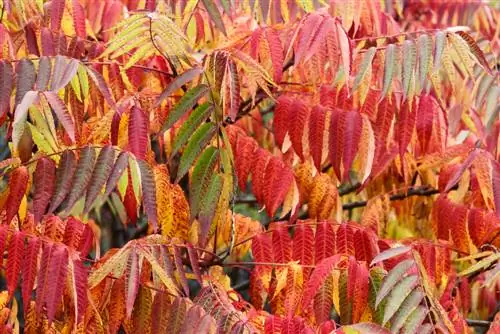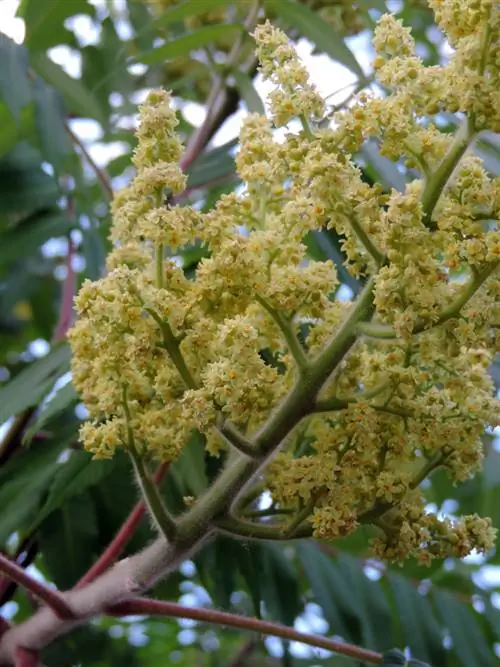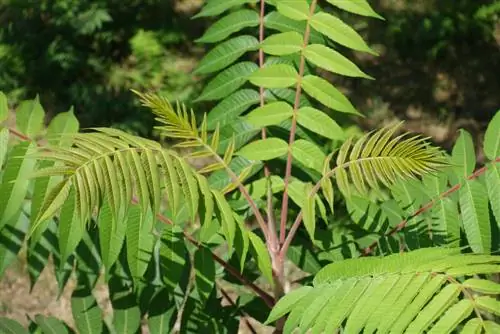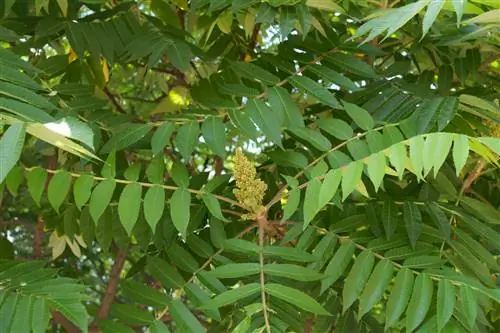- Author admin [email protected].
- Public 2023-12-16 16:46.
- Last modified 2025-01-23 11:21.
The deer butt sumac, as the vinegar tree is also called, has striking foliage. The shape and size of the leaves make the shrub the perfect shade provider. The ornamental trees are popular for their fall color, but there is confusion about their toxicity.
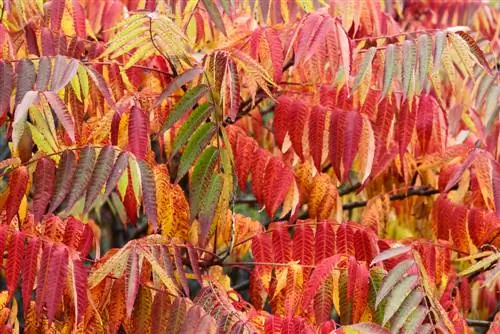
What do the leaves of the vinegar tree look like?
The leaves of the vinegar tree are arranged alternately, are pinnate and grow between 12 and 60 cm long. They consist of 9 to 31 leaflets and change color in autumn from green to yellow and orange to bright red.
Appearance
The leaves of the vinegar tree are arranged alternately. They grow between twelve and 60 centimeters long and consist of a petiole and leaf blade. The foliage is imparipinnate. There are between nine and 31 leaflets on each leaf, two of which are opposite each other. The unequal number of leaflets is caused by the fact that a terminal leaflet ends the leaf. In contrast to the lateral leaflets, this leaflet is stalked. All leaflets have an elongated and slightly sickle-like shape. They are pointed at the end and have an unevenly sawn edge.
Special features
The great popularity of vinegar trees as ornamental trees comes from the color of the leaves. The top of the leaf appears shiny green, while the underside is a light gray-green. In autumn the leaves change color. They first change from green to yellow and then take on orange tones. In October the leaves appear bright red. A vinegar tree can have green, yellow, orange and red leaves at the same time.
The expression of the colors depends on the substrate. The autumn color is intense if the tree is on sandy soil with low lime and permeable conditions. Heavy soils cause stunted growth, which means the autumn color is less magnificent.
Vinegar trees grow naturally:
- in open areas on stony ground
- on sunny south-facing slopes with nutrient-rich soil
- in small groups or individually
Toxicity
The poisonous effect of the vinegar tree is low and comes from acidic cell juices and tannins. The leaves are used to tan leather in autumn. The vinegar tree produces a milky sap in all parts of the plant, which comes out of the tissue when it is cut. It can cause irritation if it comes into contact with the skin.
The symptoms caused by the milky sap of the related poison sumac are more serious. This species contains toxins that cause blisters on the skin when touched. Their leaves differ significantly from those of the vinegar tree because they are always pinnate in three parts.

